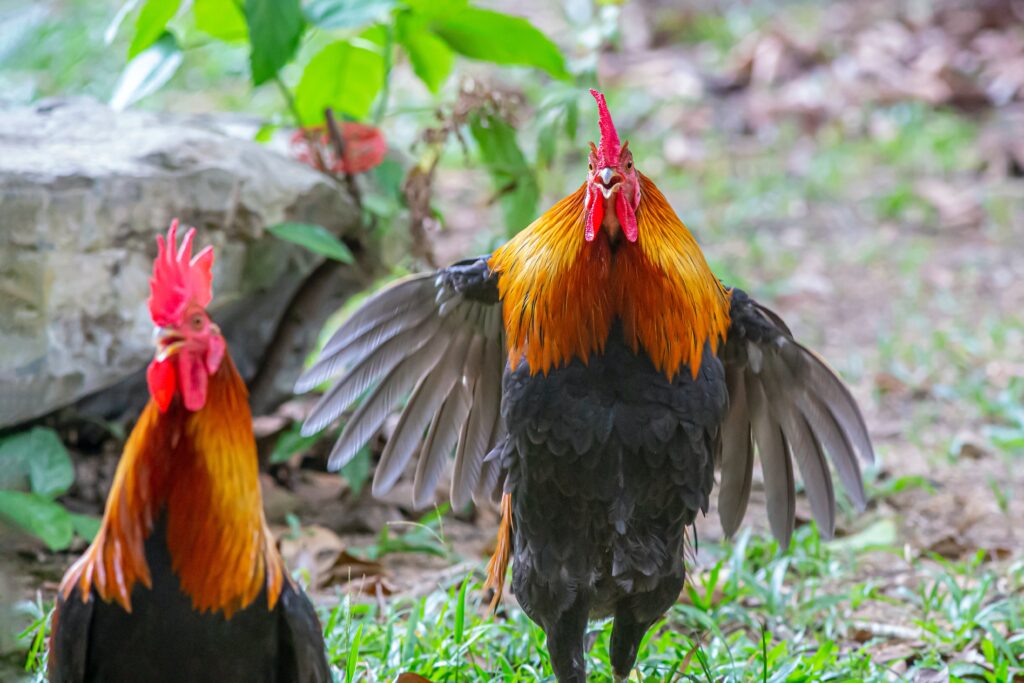Can Chickens Fly?
Can Chickens Fly? The answer is “Yes, of course.” Chickens are capable of flying, but not very far. Chickens are not bred to fly, in contrast to other birds. According to BBC Wildlife Magazine, most domesticated chickens are bred for food rather than flight. Domesticated chickens are descended from Southeast Asian red junglefowl.
Introduction
For centuries, People have tamed chickens to produce eggs, meat, and company. They are amazing animals. Even though most of us have seen hens walking around the garden and scratching at the ground, people frequently wonder if they can fly. We will examine the variables that affect chickens’ ability to fly and look into the fascinating world of chicken flight in this piece.
Understanding the Anatomy:
Understanding Can Chickens Fly, we need to understand the anatomy of chickens. Domesticated chickens are not known for having exceptional flying abilities, unlike their wild rivals. Their anatomy is one of the main causes. Because their bodies are heavier and their wings are smaller than their bodies, chickens find it difficult to fly for extended periods. They are also less able to stay in the air for long periods because their bones are denser.
Plumage and Feathers
In addition to offering insulation and protection, feathers are essential to the physiology of chickens. They also facilitate communication. The way the feathers are arranged affects how warm or cold a chicken gets inside, and in warmer weather, it allows for easier airflow cooling. Especially during courtship rituals, vibrant plumage frequently acts as a visual display, signaling health and vitality.
Skeletal Structure
Chickens’ skeletons are designed to fit their terrestrial lifestyle. The keel, or breastbone, is a crucial part because it supports the strong breast muscles that cause wing flapping. Although they are not known for being particularly good flyers, chickens can perform brief flights to protect themselves thanks to the way their bones are arranged.
Feet and Legs
Chickens are recognized for their habit of scratching and pecking, which is made possible by their specially designed-legs and feet. Their feet have claws and scales to help them stay stable on different kinds of surfaces. They can perch safely because of the way their toes are arranged—three pointing forward and one backward. These characteristics are essential to their everyday activities, such as nighttime roosting and yard foraging.

Flapping for Short Distances:
Although they can’t fly through the skies like eagles, chickens can flap their wings to make brief airborne activities. This usually happens when they have to get over obstacles, find roosting places, or flee from predators. Instead of gliding, the flight is frequently more of a flutter with quick wing flapping.
Heavy Bodies, Limited Heights:
One major obstacle to reaching great heights in flight is the heavy bodies of chickens. They typically fly low to the ground, performing most of their maneuvers only a few feet above the ground. In their natural habitats, where swift escapes from threats at ground level are more important than soars over treetops, their limited aerial ability serves them well.
Variations by Breed:
It’s important to remember that different chicken breeds have differing degrees of flight ability. Because of their increased agility, certain breeds—like bantams—may be more likely to fly short distances regularly. Conversely, larger, heavier breeds—like the Orpington—may prefer to remain firmly grounded and are less likely to take to the skies.
Encouraging Natural Behavior:
It’s important to recognize and honour hens’ innate instincts, even though they might not be world-class aviators. Creating an environment that is conducive to short flights, roosting spots, and perches for chickens allows them to exhibit their natural behaviors. This guarantees these feathered friends a more fulfilling life and enhances their general well-being.
Conclusion:
Although they may not be regarded as skilled flyers in the grand scheme of things, chickens’ capacity to travel short distances is evidence of their adaptability. Gaining knowledge about the anatomy and breed variations that affect chicken flight can help one better appreciate the fascinating world of domesticated chickens. Encouraging and enabling their innate behaviors as chicken keepers guarantees a peaceful coexistence with these endearing and important members. We hope you have an answer regarding the question, Can Chickens Fly?
- Can chickens fly? Uncover the amazing secrets of chicken flight, from anatomy to breed variations.
- Ostrich Skeleton: Exploring the Fascinating Mysteries
- How High Can Chickens Fly? Dark reality check by Unlocking the Mysteries of Clucky Aeronautics
- What is a baby ostrich called? : Revealing the Strange Truth
- Why do cats like to be spanked? : Understanding the Strange Cat Behaviour
Check out our more articles on Birds & Animals Here
Watch the video: 🐣 How A Chick is Born From An Egg – A Fascinating Journey into Life! 😱🌟
Watch video: Why do cats like to be spanked?
Watch video : 5 Fascinating Facts About Rats











3 thoughts on “Can chickens fly? Uncover the amazing secrets of chicken flight, from anatomy to breed variations.”